Today, endoscopic operations to remove the gallbladder are one of the most common endoscopic operations in surgery. The technology has been proven and the results are good. And the better the treatment results, the earlier the operation is performed.
In addition to gallstones, there are, in particular, gall bladder polyps. With this disease, removal of the diseased organ is also indicated.
The reason for the need to remove the bladder is the high risk of cancer.
A polyp is considered a precancerous disease, and according to statistics, up to 30% of polyps degenerate into malignant ones. And gallbladder cancers account for up to 5% of all cases malignant tumors, and the prognosis for this disease is poor. In addition, polyps also occur more often in conditions of inflammation, and therefore not in a healthy gallbladder.
Consequences of gallbladder removal
After removal of the gallbladder (cholecystectomy), a series of biochemical changes occur, and the system for regulating bile flow is disrupted. With the elimination of the bladder, the motility of the muscles of the duodenum is disrupted. And bile becomes more liquid and worse protects against the invasion of microbes. They do not die, but multiply, upsetting the balance of microflora. Bile acids turn into chemically strong aggressors - irritants of the mucous membrane. The result of these metamorphoses can be inflammation of the duodenum (duodenitis) and disruption of its motor activity, throwing food masses back into the stomach and esophagus, and as a result - esophagitis, gastritis, enteritis, colitis. The troubles are complemented by disturbances in the secondary absorption and use of bile due to the absence of a bladder. Bile acids usually make the liver-intestinal-liver turnover 5-6 times a day, and are now excreted and lost by the body. Without them, interruptions in digestion get worse. Of course, the body’s compensatory capabilities are great, but it is impossible to do without appropriate treatment from a gastroenterologist. Nutrition of the patient in the first seven days after surgery
Nutrition for a person after cholecystectomy includes:
· lean beef and chicken breast boiled;
· vegetable soups;
· buckwheat and oatmeal porridge in water;
· fermented milk products: low-fat kefir, yogurt, skim cheese;
· baked apples and bananas.
The following types of food are prohibited for consumption:
· fried and fatty foods;
· spicy and salty foods;
· boiled fish;
· sweets, especially chocolate;
· strong tea, coffee;
· alcohol;
· drinks with sugar.
After surgery, a person needs to monitor the regularity of bowel movements. If difficulties arise with this, then you need to do a cleansing enema or take a laxative plant origin(sena leaf, kushina decoction).
The first months after cholecystectomy
ABOUT The main advantage of laparoscopic cholecystectomy is the relatively easy postoperative course. The patient experiences minor pain at the sites where the trocars are inserted, as well as in the shoulder girdle due to the injection of carbon dioxide during the operation.
In the postoperative period, the patient spends 2 hours in the intensive care unit, then he is transferred to a regular ward. Over the next 4-6 hours, the patient should not drink, and it is also forbidden to get out of bed. Then the patient is allowed to drink ordinary water without gas in small portions of one to two sips, with a total volume of no more than half a liter. The patient can slowly get out of bed, for the first time under the supervision of medical personnel.
The next day, the patient has the drainage removed from the abdominal cavity. This is a painless procedure that is performed during daily dressing.
During the course rehabilitation period there should be no complications. Physical activity may be limited due to possible abdominal pain, which disappears on the second day after surgery.
The patient is discharged on day 3 if the postoperative period passes without complications. Upon discharge, the patient will be given a sick leave certificate (if such a need exists), as well as an extract from the card, which will detail the diagnosis, as well as recommendations on nutrition, physical activity and drug treatment. Sick leave is given for the duration of a hospital stay for 3 days after discharge, and then it must be extended by a surgeon at a municipal clinic.
Will new stones grow after gallbladder removal?
Alas, the operation does not change the composition of bile. With the removal of the gallbladder, hepatocytes continue to produce “spoiled”, stone-forming bile. In medicine, this phenomenon is called biliary insufficiency. Removal of the gallbladder with stones affects changes not only gastrointestinal tract, but also other systems. After the bladder is removed, the amount of bile increases sharply and the pressure in its “overpass” increases, violating physiological norms.
Under the pressure of a liquid toxic to the mucous membrane of the intestines and stomach, the structure of the delicate membranes changes. Prolonged leakage of toxic bile can even lead to cancer. Therefore, even in the absence of signs of digestive disorders, the main task after surgery is to periodically determine the biochemical composition of bile.
This can be done using a duodenal (that is, related to the duodenum) examination. The procedure, of course, is not the most pleasant, but it is reliable. Ultrasound does not replace it. But it’s easy to find out whether bile is capable of forming new stones in the gall bladder. It is enough to put 5 ml of the extracted liquid in the refrigerator for 12 hours. If a precipitate occurs, it means that the bile is stone-forming, and you must take appropriate medications. These are drugs containing bile and bile acids (allochol, cholenzyme, lyobil), which are used for replacement therapy for biliary insufficiency in the absence of a bladder. Other stimulants of bile production include osalmide and cyclovalone. The usual mandatory prescription is ursodeoxycholic acid (250-500 mg at night), which is non-toxic to the mucous membrane. In addition to domestic enterosan and hepatosan, it contains ursofalk and ursosan. The last two are one and the same, the first is distributed in Europe, the second in the East, and the raw materials are the same.
Where does bile go from the liver after the gallbladder is removed? Can stones form in the bile ducts?
U healthy person Bile flows from the liver to gallbladder, where, accumulating, it reaches a certain concentration. As food arrives, concentrated bile from the bladder is secreted into the duodenum and is involved in the digestion and absorption of fats: butter and vegetable oil, fat from meat, fish, sour cream, milk and other products.
After removal of the gallbladder, bile enters the duodenum directly from the liver through the hepatic and common bile ducts. Therefore it is less concentrated and can perform. the role of digestive juice only applies to small portions of food.
If a person does not follow the correct diet, bile stagnation occurs in the liver. And then there is a danger of developing an inflammatory process in the intrahepatic ducts (cholangitis) and even, although rarely, the formation of stones in them. That is why after the operation the patient is supposed to eat little, but often (6-7 times a day). After all, every meal is a kind of push that promotes the active release of bile into the duodenum.
Complications after cholecystectomy
As with any operation, complications are possible after gallbladder removal. Their frequency does not exceed 2-3% of the number of operations performed.
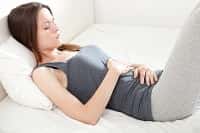
The main complications include:
— Trauma or damage to the common bile duct
— Damage to large vessels
— Wound infection
— Damage to internal organs
The process of rehabilitation after cholecystectomy.
After removal of the gallbladder, it is necessary to follow a number of regular activities for 4-8 weeks:
- limitation physical activity and lifting weights of more than 4 kilograms, which contribute to increased breathing and tension of the abdominal muscles;
- following a strict diet, eating light steamed food in small portions 6-7 times a day (chicken broth, low-fat cottage cheese, boiled lean meat and fish, porridge, etc.);
— compliance with the water regime, no more than 1.5 liters of liquid;
- taking regular walks.
Water cleanses the body, without it you can’t go here or there
A good diet should be combined with frequent drinking of water. Before meals, every 2.5-3 hours you should drink about a glass (200-250 ml) of water, based on the dosage: 1 sip (30 ml) per 1 kg of body weight. This is a necessary condition for protecting the mucous membrane of the gastrointestinal tract (GIT) and duodenum from the aggression of bile acids.
It happens that due to a change in the motility of the duodenum, bile is thrown back into the stomach and further into the esophagus. In addition to the unpleasant feeling of bitterness in the mouth, the “counterflow” of bile damages the mucous membrane of the esophagus.

Therefore, drinking water to neutralize the harmful effects of bile and normalize the functioning of the gastrointestinal tract is especially important. For any dyspeptic disorders - rumbling, bloating, diarrhea, constipation, do not rush to swallow the pill, but drink a glass of clean water.
Water is also useful as a means of gentle massage of the abdominal cavity when swimming.
Daily physical activity is the key to good health, as well as a guarantee of avoiding bile stagnation. After one or two months, it is necessary to introduce weekly trips to the pool. Regular walking for 30-60 minutes will promote a comfortable outflow of bile, as well as the enrichment of body tissues with oxygen. This is especially important in the formation of normal metabolism and liver activity.
A few days after you start walking, you can enter morning exercises. Over the next 6-12 months, heavy physical activity is absolutely contraindicated for patients, as this can cause the formation of a postoperative hernia. Intimate life can be resumed 1.5-2 months after the bladder is removed.
A couple of months after surgery, patients can and even need to start skiing. Skiing should be done at a calm pace.
So, often an operation to remove the gallbladder is cholecystectomy, the only treatment method that can stop the process of stone formation. However, in the postoperative period, a complication sometimes occurs - postcholecystomy syndrome, which can be avoided through diet, taking hepatoprotectors, and careful and regular examination of the abdominal organs. In general, pay close attention to your health.
It is divided into the preoperative period and the period after surgery. Nowadays, the operation, which is called laparoscopy in medical language, is performed using modern methods and the risk of complications is minimal (only 3%).
Life without a gallbladder begins to proceed according to new laws. The human body will be forced to adapt to functioning in an atypical environment - to do without an organ that is important to it. After the operation, the body will be forced to fight the increased number of bacteria that populate our digestive tract, because many of them died under the influence of bile.
Now they have a certain chance of surviving and reproducing. In addition, the pressure on the walls of the ducts through which bile passes will increase, because the bile fluid will no longer accumulate and be stored in the place designated for it - the bile reservoir, but will directly flow into the paths that drain it. But besides all this human body can adapt and learn to cope with many problems that have arisen, only he needs help with this.
In order to understand the question of how to build your life without a gallbladder and what to do in this situation, you need to familiarize yourself a little with the principles of work digestive system generally. Let's try to give a description in a form accessible to the average person, using a minimum of medical slang.
Let's start with the fact that the bladder is a reservoir for collecting, thickening and storing bile. At the right moments, bile acid is released from the hollow organ, passes through the passages and is supplied to the duodenum, where it helps ensure the process of breaking down and digesting food.
When the gallbladder is removed, there is some disruption in the production and flow of bile.
The body undergoes a number of significant changes affecting biorhythms at the chemical level. It was already mentioned earlier that in the current situation, after laparoscopy, bile can no longer fully cope with microorganisms and neutralize them to the extent that this happened before the operation to remove the gallbladder.
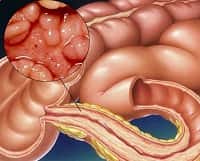
This means that it is inevitable that bacteria will begin to multiply and lead to undesirable consequences, namely, disruptions in the digestive system. Such changes can cause many diseases of the digestive tract - colitis, enteritis and others.
The consequences, in particular, of laparoscopy threaten the patient with the fact that the pressure on the walls of the ducts will increase, because even without the removed organ, the amount of bile acid produced does not decrease at all - it remains at the same level, and in certain volumes.
But at the same time, there is nowhere to store it, by the way, and it is also impossible to thicken it, so it turns out that the body must adapt to manage bile in the form in which it now exists. IN natural conditions bile is supplied from the liver at least 6 times in 24 hours, enters the intestines and returns again, and without a collecting reservoir, bile acids are excreted much faster, and their irreversible loss occurs.
All the changes described cannot in any way be called positive. An organ that played an important role in the digestive system was removed from the human body. Therefore, the rehabilitation period is always a long process, but if you strictly follow the recommendations given by your doctor, you can learn to live without a gallbladder. In principle, this is not very difficult and quite doable. The main thing is to remember that you need to change your lifestyle, diet, physical activity, etc., which may threaten the patient with health complications.
Possible problems after surgery
The percentage of recovery without significant complications after cholecystectomy is much higher than cases when the patient develops any negative consequences.
Although, in fairness, it is worth noting that laparoscopy only gets rid of the diseased organ, but, unfortunately, it does not cure concomitant diseases.
In addition, patients in the postoperative period may experience problems such as:
- A relapse may occur, which means that the formation of stones or the so-called biliary sludge (precipitation followed by the formation of solid particles in the ducts) will continue to progress and, with the most unfavorable prognosis, can lead to the appearance of tumors, including low-quality ones.
- After removal of an organ, the symptoms that the patient had before cholecystectomy may remain, and new unpleasant sensations may also be added to this list: bloating, rumbling, unstable stool, bitter taste in the mouth, pain in the abdomen, and others.
- Concomitant diseases also in the period after surgical intervention may worsen, in particular, they may provoke diseases of the liver, duodenum, and spleen.
- In very rare cases, but nevertheless this also happens, during the operation the bladder is not completely cut out, stones can also remain in the bile ducts. But the worst thing is if the surgeon, through negligence or due to careless handling, leaves a medical instrument inside a person, which, naturally, will not have the best effect on the patient’s well-being.
In the postoperative period, when any complications occur, the patient must undergo periodic examinations, and if necessary, the therapist may prescribe additional treatment.
Remember, only a doctor can make prescriptions.
It is important to conduct a biochemical analysis of the composition of bile acids and this must be done regularly. It is, in principle, not difficult to analyze bile fluid for the re-formation of solid particles.

To do this, you should place a little of the selected liquid in the refrigerator for half a day, and if during the specified period of time sedimentation is observed in the sample, this may mean that the bile is able to form conglomerates again.
In this case, the doctor will prescribe medications(“Liobil”, “Cholenzim”, “Allahol” and others), stimulating the production of bile. Products based on ursodeoxycholic acid - Ursosan, Hepatosan, Ursofalk - are also necessarily prescribed by the attending physician.
The rehabilitation period can take quite some time. Experts say that a person will be able to fully recover only after a year. Of course, a young healthy body quickly acclimatizes to changes in the body, but older people who have concomitant diseases will have to spend much more time and effort to recover. Everything is very individual, much depends on compliance with the prescribed recommendations.
An important point in postoperative recommendations is compliance with nutritional norms and rules - this is the basic principle. In addition, the patient will be required to refrain for some time from excessive physical exertion and other things that can have a detrimental effect on the body, which is still fragile and has not recovered from the operation. So, how to behave correctly, what can you do and on what principle should you structure your diet?

So, upon returning home after being discharged from the hospital, a person must remember that a proper diet and life without bad habits will significantly ease the transition period and improve the quality of life.
For several months you will need to refrain from all physical activity, especially those that involve tension in the abdominal muscles.
If a person neglects this recommendation, it is possible to provoke the appearance of hernias, not only in the abdomen, but also in the femur. A year or a little less should not test the body's strength, but give it the opportunity to gain strength, and also get used to doing without the gallbladder.
Patients who have excess weight, as well as for people whose abdominal muscles are weakened, the doctor will recommend purchasing a postoperative bandage. You can wear it all day and take it off only at night or during naps.
The correct diet and nutritional standards will help reduce the factors of relapse. To do this, you should completely exclude fried, fatty and spicy dishes, as well as all kinds of concentrates rich in cholesterol. In general, we are not talking about cigarettes and alcohol - they simply should not be in the patient’s life, not only in the period after surgery. Bad habits every self-respecting person leading healthy image life, in principle, should not exist at all.
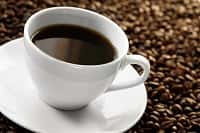
Will have to limit water regime- 1.5 liters per day. You can drink it neat mineral water, weak tea, only weak coffee, 1% kefir, compotes, jelly, rosehip decoction.
By the way, it is recommended to eat dense foods no earlier than a week after surgery. And already being at home, a person can gradually, little by little, begin to eat liquid mashed potatoes, fruit jelly, pureed soups, boiled or steamed fish, chopped boiled meat, porridge, noodles, egg omelet, boiled, stewed vegetables, crackers or stale day-old bread.
It is important not to consume a lot of salt, and, if possible, try not to add salt to food at all or add a little salt when it is already cooked. It is estimated that 8 grams of salt is, in principle, considered acceptable.
There should be at least six meals, and the amount of food eaten should not be large.
Products that are prohibited:
- meat and fish dishes cooked in a frying pan;
- strong natural coffee;
- mushrooms;
- berries and fruits taste sour;

- baked goods;
- cakes, pastries;
- carbonated sweet drinks;
- spicy seasonings and snacks.
Living without a gallbladder means limiting yourself to food all your life, following the dietary principle of nutrition. This is the only way to achieve good health and avoid relapses. Of course, after 3 months a person can occasionally treat himself to something tasty, but he still shouldn’t get carried away with such food.
A dietary regimen and way of eating will help improve the functioning of the digestive system in the shortest possible time.
Preventive examinations should be done at least once every six months after surgery. In the future, if nothing bothers you, you can come for a preventive examination to the doctor once a year.
Physical activity
A guarantee that bile will not stagnate and a person will feel good is physical activity, moderate, but daily.
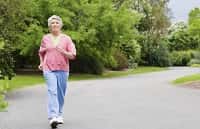
After some time, you can and should begin to lead an active lifestyle. You should start with leisurely walks in the fresh air. By walking for 1 hour every day, a person promotes the proper outflow of bile and enriches tissues with oxygen.
After 2 months it would be good to start visiting the pool. Water procedures have a beneficial massage effect on the abdominal muscles and tone them. But for those who know how to stand on skis, you need to remember how to do it. skiing will help strengthen the immune system.
Concerning intimate life, then it can be resumed only 1.5 months after surgery. At the next visit, the doctor will recommend that the patient do therapeutic exercises and select specific types of exercises based on the person’s age and physical fitness. It was mentioned earlier that all exercises should not involve excessive stress on the abdominal muscles.
We present an approximate set of exercises that a person can do during the rehabilitation period:
Exercises while standing.
- First, you need to do a short warm-up - walking in place at a measured, unhurried pace.
- Torso turns alternately different sides, hands on waist.
- Without changing the position of your arms, move your elbow joints back while taking a deep breath.
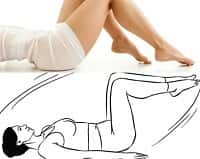
Lie on your back.
- We pull the straightened legs towards the buttocks and return them back, but the heels cannot be lifted off the surface.
- Raise your palms and feet off the floor, spread your lower limbs to the side and, as you exhale, return them to their original position.
We roll over onto our stomachs.
- We place our hands randomly along the body. We bend our legs, inhale, straighten - exhale slowly.
- Place your right hand on your stomach, and left hand along the body, legs straight. We draw in full lungs of air and stick out the abdominal wall as much as we can, then slowly exhale and try to pull the stomach back in as much as possible.
All the described exercises must be done at least 6 times.
- fats;
- vitamins;
- cholesterol;
- amino acids;
- calcium salts.
- high temperature;
- nausea;
- soreness behind the sternum;
- pain in the right hypochondrium;
- jaundice;
- stool discoloration;
- yellow spots on the skin;
- bile in vomit.
- unbalanced diet (predominance of animal fats in the diet);
- hormonal imbalance (problems with the functioning of the thyroid gland);
- sedentary life;
- obesity;
- violation of fat metabolism;
- inflammatory changes in the bladder;
- liver damage;
- spinal trauma;
- pregnancy;
- starvation;
- genetic predisposition;
- diabetes;
- intestinal ailments.
- helminths;
- cirrhosis of the liver;
- hemolysis;
- demographics (rural);
- old age.
- disruption of the physiological outflow of bile;
- abdominal pain (biliary colic);
- bladder infection;
- obstructive disorders of the biliary tract;
- blockage of the pancreas;
- pancreatitis;
- exacerbation of chronic cholecystitis;
- calculous cholecystitis;
- cholesterosis;
- severe acute cholecystitis;
- ineffectiveness of conservative treatment.
- jaundice;
- acute cholecystitis in the later stages (after 72 hours from the onset of the first manifestations of the disease);
- acute pancreatitis;
- inflammation of the common duct;
- a history of abdominal surgery in the last six months;
- cirrhosis of the liver;
- Mirizzi syndrome;
- atrophic changes in the bladder;
- organ sclerosis.
- stone extraction;
- complete removal of the organ.
- before starting treatment, it is recommended to use laxative medications for several days to cleanse the intestines;
- in the fight against stones, it is important to fast the night before surgery;
- limit the use of medications that affect blood clotting. Their use before surgery threatens the development of complications (bleeding);
- It is important to shower with antibacterial soap before the intervention.
- after laparoscopy, patients are discharged the next day after the intervention;
- After open surgery, discharge is possible in 4-5 days. This depends on the ability of patients to eat, drink and walk independently.
Removal of the gallbladder is the only the right way fight against many ailments of this organ. The gallbladder is a small organ with a hollow structure. It is located in the abdominal cavity. Outwardly, it resembles a pear with a volume of up to 70 ml, which is located under the liver.
1 Medical indications
In the body, the gallbladder plays an important role: it accumulates, concentrates, and stores bile, which is formed in the liver. The gallbladder is connected by its ducts to the duodenum. This allows bile to flow easily with each meal. Bile is a fairly valuable substance. With its help, digestion and absorption occurs:
![]()
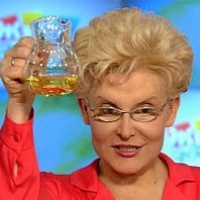
It is bile that can enhance parietal digestion, secretion and intestinal activity. Signs of gallstone disease include:
Bladder removal (cholecystectomy) - surgery, which is carried out to combat gallstone disease. The pebbles in the bubble come in different hardnesses and sizes. Most of them are of a cholesterol nature; there are pigmented (bilirubin) and mixed formations. But they all have common feature: violate correct work bladder and the body as a whole. Therefore, cholecystectomy is an important component of the complex treatment of the disease.
Reasons for the formation of stones:
Pathology can be provoked by:
2 Methods of surgical therapy
The main indications for gallbladder removal are:
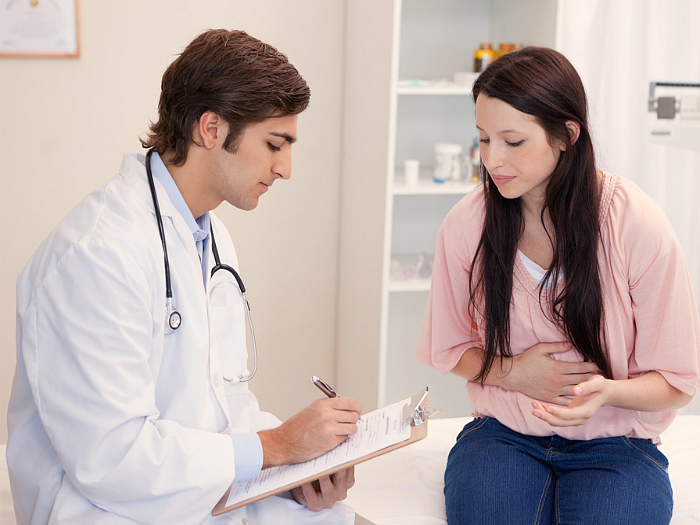
Cholecystectomy is performed openly or laparoscopically. Open intervention is a large-scale procedure performed for health reasons. Laparoscopic surgery is not performed on all patients. There are absolute and relative contraindications to.
It is prohibited to perform laparoscopy in cases of inflammation of the abdominal cavity, seals in the neck of the gallbladder, severe obesity, later pregnancy, myocardial infarction, suspected bladder cancer. Scroll relative contraindications, in which surgery is possible under the supervision of a doctor:
3 Laparoscopic technique
There are two main operations to remove the gallbladder performed laparoscopically:
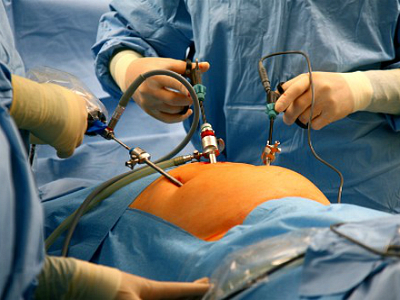
The main requirement is the absence of complications and advanced stages of the disease. For this operation, special instruments are used - thin trocars. They are introduced into the abdominal cavity of women and men through small incisions, which are almost invisible after surgery. The intervention is carried out under general anesthesia, so the patient does not feel anything.
During laparoscopic gallbladder removal, the doctor makes four small holes. A tube with a microscopic camera is inserted into one of them to visualize the abdominal cavity on a monitor screen. The patient's abdomen is inflated with carbon dioxide. Two holes are used for insertion of instruments, and the fourth incision is used for drainage.
After removal of the gallbladder, cholangiography is required - this is an X-ray examination to check the bile duct for pathology.

The altered ducts must be removed and the incisions are sutured. This type of operation usually lasts up to several hours. It happens that, against the background of laparoscopic intervention, they switch to open surgery.
4 Open surgery
Conventional open intervention is used in more severe, complicated and advanced cases. During the operation, conventional surgical instruments are used. Access is in the subcostal area on the right. An incision is made up to 15 cm with a scalpel. To clearly visualize the bubble, it is important to retract the tissue, muscles, and liver back. Before removing the organ itself, the bile vessels and ducts are first cut out.

During each operation, women and men are necessarily checked for the presence of stone formations. A drainage tube is placed in the wound, and the peritoneal incision is sutured. The drainage tube and sutures are removed after a few days. Open surgery to remove the bladder can take up to two hours.
Minimally invasive intervention is a modification of traditional surgery. It is carried out similarly to a major intervention, but through small incisions in the peritoneum. This minimizes the consequences of the intervention, the duration recovery period.
Preparation for surgery has its own characteristics:
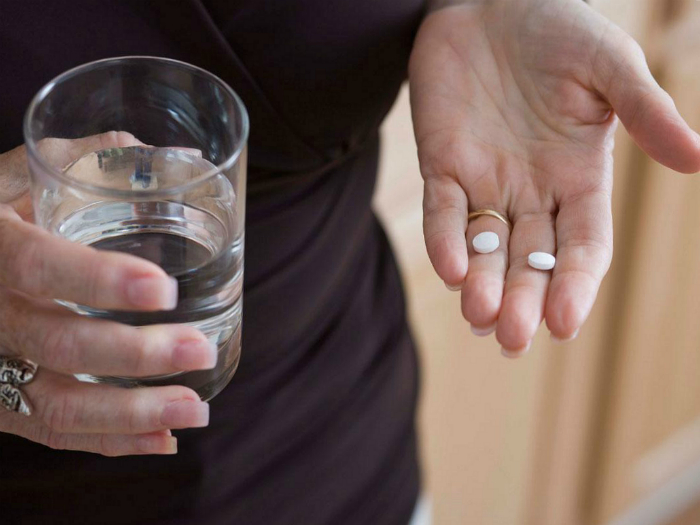
5 Rehabilitation period
The recovery period after surgery varies. After the intervention, all patients are transferred to intensive care for the period of recovery from anesthesia. They are then transferred to the regular wards of the surgical department. The length of hospital stay directly depends on the method of surgical intervention:

Patients can return to a regular diet a week after surgery, and return to normal life after removal of the gallbladder and activities in a month to a month and a half.
During recovery, many people are concerned about:
- 1. Abdominal pain. It is observed due to the accumulation of gas in the abdominal cavity. If such symptoms occur, the doctor will usually prescribe pain medications for several days. To enhance the effect, it is important to take them daily at certain hours. A short walk at a calm pace can help minimize pain.
- 2. Soreness in the suture can last up to 2 weeks. Every day it decreases. To prevent suture ruptures, it is important to apply pressure on the area above the incision when coughing or sneezing.
- 3. Inflammation of the throat from the breathing tube. To minimize discomfort, it is recommended to suck on pieces of ice or rinse the cavity with herbal decoctions. This will soothe and relieve inflammation of the mucous membrane.
- 4. Nausea.
- 5. The tendency to diarrhea after a meal can persist for up to a month.
- 6. Hematomas and bruises around the wound.
- 7. Watery, bloody discharge from the incision persists for several days after the intervention. This is a physiological phenomenon that helps cleanse the wound field.
It is important to live the first month after the intervention fulfilling the following requirements:
- do not carry weights exceeding 4 kg;
- minimize strenuous work that forces you to breathe deeply and intensely;
- Walk in the fresh air as often as possible.

After removal of the gallbladder, it is necessary to care for the wound. Dressings need to be changed daily or when they become dirty. It is important to always keep the wound clean by washing with mild soap and running water. If the wound is closed with stitches, staples, or surgical glue, you can bathe in the shower after removing the bandages. If strips for seamless closing of the edges or a Steri-Strip skin patch suture are applied to the wound, then before taking a shower, it is necessary to cover the incision with plastic wrap.
Experts do not recommend taking a bath, swimming in a pool, plunging into ponds, or visiting baths or saunas for the first month of life after removal of the gallbladder. The diet is prescribed for the first time to speed up the recovery period. It is important to limit the intake of fatty, spicy foods; it is better to eat often in small portions.
If you experience hard stools, you should:
- use laxatives;
- eat foods high in fiber;
- limit the consumption of baked goods, fresh bread;
- drink more fluids.
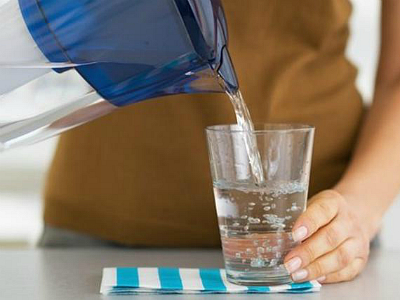
7 Complications of the operation
Conservative treatment only temporarily relieves symptoms, and each exacerbation only worsens the condition. After removal of the gallbladder, diarrhea appears, which disappears after a few years. Digestive problems often develop. The reasons for this are insufficiency of bile and the lack of a reservoir where it would accumulate. More often than not, patients are able to live a full life after the intervention.
The survival rate after gallbladder removal is more than 90% (in the first 10 years). Therefore, the risk of complications after it is small. Complications often occur against the background of the patient’s severe general condition in the form of:
- bile leaks;
- bleeding of various locations;
- vascular thrombosis;
- problems with the cardiovascular system;
- infections;
- injuries to other organs (bile ducts, liver, intestines);
- pancreatitis;
- pneumonia.

If the following symptoms appear, it is important to consult a doctor immediately:
- fever;
- increased body temperature above 38°;
- the appearance of green, milky discharge from the drainage;
- the presence of thick wound edges;
- pain that is not relieved by painkillers;
- breathing problems;
- prolonged cough;
- inability to eat and drink;
- yellowing of the skin and mucous membranes;
- the appearance of gray clayey feces.
Such symptoms always indicate the presence of complications that must be treated immediately in a hospital setting and under the supervision of doctors. Delayed therapy can end badly. The prognosis after surgery is favorable. Cholecystectomy can significantly improve the well-being of patients. It relieves pain and discomfort in the gallbladder, preventing their re-development.
And a little about secrets...
A healthy liver is the key to your longevity. This organ performs a huge number of vital functions. If the first symptoms of a gastrointestinal or liver disease have been noticed, namely: yellowing of the sclera of the eyes, nausea, rare or frequent bowel movements, you simply must take action.
Diseases of the biliary tract are quite common. The gallbladder is an organ in which bile is stored. Bile plays an important role in the digestion process. But there are cases when this organ gives a person many problems, which can only be solved by surgical intervention.
Some sick people, fearing the consequences of gallbladder removal, refuse surgery, exposing themselves to serious danger. The gallbladder itself is a hollow, oval-shaped organ. The presence of a gallbladder allows the bile produced by the liver to gradually accumulate, becoming darker, thicker, and richer.
There are many reasons why gallbladder removal is required. Among them, the main place is given to the formation of stones. This occurs due to an incorrectly formulated diet, hereditary predisposition, elevated cholesterol levels, and stagnation of bile due to a sedentary lifestyle. The formation leads to injury to this organ, its stretching, and the development of bedsores. In some cases, an infection is added to this process. Therefore, a very real threat may arise - breaking through the walls of the gallbladder. This is the main indication for surgery to remove this organ.
Of course, any surgical intervention on the human body represents quite a significant stress. The same stress can be called cholecystectomy - surgery to remove the gallbladder. After all, bile, produced by the human liver and located in the gallbladder, is necessary for digesting food, in particular, for the breakdown of fats. During the digestion process, it is reflexively released into the lumen of the duodenum.
After surgery, a person must choose the appropriate regimen and diet to help the bile ducts take on the necessary function of the removed bladder, thereby compensating for its absence. After all, bile will constantly flow into the duodenum. Doctors note that after removal of the gallbladder, patients experience the so-called postcholecystectomy syndrome. The reason for this phenomenon is a violation of the interaction of all organs involved in digestive process. There is an exacerbation of chronic diseases such as gastritis, stomach ulcers, colitis, pancreatitis, enteritis, enterocolitis.
The consequences of removing the gallbladder are more severe if there is for a long time there were stones. After surgery, there is nowhere for bile to accumulate, so the bile duct, which exits into the duodenum, opens only when food enters the stomach. This explains the need to adhere to strict rules.
Basic principles proper nutrition quite simple. A person should switch to fractional meals, eat food in small portions 5–6 times a day. If such recommendations are not followed, stagnation of bile will appear in the biliary tract, stones will begin to form again, and the inflammatory process will significantly intensify. Diet is especially important in the first months after surgery. The main principle of such a diet is to reduce the activity and irritation of other digestive organs. Boiled, stewed and steamed foods are recommended.
In the first month and a half after surgery, you should eat only pureed food. Moreover, the daily calorie content of food consumed should not exceed 2300 kilocalories. You should limit your salt intake, refuse fresh bread, replacing it with crackers. Noodle soups with vegetable broth are welcome. Every day you can eat one chicken egg, omelet, low-fat cottage cheese, low-fat sour cream. It is important to increase your free fluid intake to 1.5 liters. The doctor will tell you the exact list of recommended food products, and the specialist will also determine the frequency of changing recovery diets.
After removal of the gallbladder (cholecystectomy), diarrhea occurs.
The gallbladder is a kind of reservoir for storing bile. The role of bile in the process of digesting food is quite large, because it is bile, entering the duodenum, that ensures normal digestive function.
Mechanism of development of diarrhea after surgery
Resection of the gallbladder leads to disruption of food digestion. According to statistics, digestive problems, including diarrhea, occur in 80% of patients after bladder removal. Diarrhea lasts 3-5 days, this is the time necessary for the gastrointestinal tract to adapt to functioning without the gallbladder.
After removal of the bladder, bile almost continuously enters the duodenum in small parts from the liver ducts through the common bile duct.
Hepatic bile, in comparison with bladder bile, is not concentrated and is less able to emulsify (digest) fats coming from food.
Thus, after cholecystectomy the following conditions must be met:
- In order to ensure complete digestion, you need to consume food in small quantities,
- it is necessary to increase the frequency of meals, since bile is permanently supplied to the intestines,
- it is necessary to refrain from consuming excess fats,
- It is advisable to limit the consumption of foods that enhance peristaltic movements (for example, fiber).
When the gastrointestinal tract operates, in addition to digestive juices, substances that stimulate peristalsis enter the intestinal lumen; these molecules enhance the passage of the bolus. Bile plays a leading role in this process. At normal conditions bile is secreted due to contractile movements of the gallbladder. This occurs when food enters the body.
If the gallbladder is removed, bile enters the intestinal lumen permanently. This leads to potentiation of diarrhea in the postoperative period.
However, due to the fact that bile from the liver is not concentrated, it does not act as a strong intestinal stimulant. The development and duration of diarrhea directly depends on the health of the intestines, the status of vegetation, and the properties of incoming food. Practice proves that diarrhea after resection of the gallbladder is natural and removable.
Often, over time, the human body independently adapts to a new regime of bile secretion. However, there are mechanisms to speed up this process. Prolonged diarrhea is fraught with the development of complications such as dehydration, loss of minerals, useful elements.
An important reason for the appearance of diarrhea after cholecystectomy is non-compliance with the diet and the prescribed diet. Bile accumulates in the ductal system, therefore, in order to speed up its movement through the ductal system, the patient is advised to eat frequent meals.
If these rules are not followed, bile will irritate the mucous membrane of the intestinal walls, which in turn will potentiate the development of pathological changes in the intestines in the form of diarrhea.
Associated symptoms of the condition
In addition to diarrhea, after resection of the gallbladder, flatulence develops, the formation of gases in the intestines increases, and the abdomen swells.
Melena (tarry, bloody stools) may develop. Patients often complain of dull pain in the right hypochondrium.
The pain syndrome tends to intensify with palpation and active physical activity.
With prolonged diarrhea, dehydration occurs. This may lead to the death of the patient.
There is general malaise, lethargy, and headache.
The patient is concerned about severe thirst and dry mouth.
How to determine dehydration?
If you have diarrhea, you should be wary of dehydration. If you have symptoms of this condition, you should consult a doctor. A symptom of a lack of fluid in the body is ordinary thirst. A feeling of weakness, headache, reminiscent of a hangover, also indicate dehydration. Dizziness develops, deterioration is noted, the pulse quickens, patients complain of dry mouth. Dehydrated patients' urine becomes darker and they urinate less frequently than usual.
With prolonged dehydration, weight loss is possible.
Treatment
Drug treatment
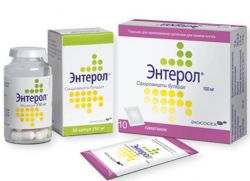
Enterol
Description: the pharmacological agent Enterol is an antidiarrheal agent that regulates intestinal microflora. The drug contains microorganisms that have a biological protective effect against normal microflora. Enterol returns the microflora to normal and stops diarrhea.
Contraindications:
- installation of a central venous catheter,
- allergic reactions.
The price varies from 230 to 300 rubles depending on the pharmacy chain.
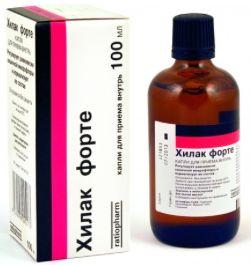
Hilak forte
Description: Hilak forte regulates the balance of the intestinal bacterial flora and brings its composition back to normal. Due to the presence of metabolites of normal bacterial flora in the drug, the drug restores intestinal function.
Contraindications:
- allergic reactions,
- Use during pregnancy and lactation only as prescribed by a specialist.
The price varies from 400 to 500 rubles.
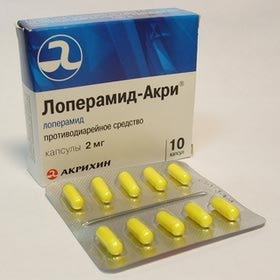
Loperamide
Contraindications:
- allergic reactions,
- lactose intolerance,
- intestinal diverticula,
The price varies from 100 to 200 rubles.

Imodium
Description: is a remedy against diarrhea. Understands motor activity intestinal myocytes, reduces the rate of passage feces. It is characterized by a rapid onset of effect and duration of action.
Contraindications:
- allergic reactions,
- lactose intolerance,
- intestinal diverticula,
- acute intestinal obstruction,
- nonspecific ulcerative colitis in relapse,
- period of pregnancy, lactation.
The price varies from 300 to 400 rubles.

Diara
Description: is a remedy against diarrhea. Understands the motor activity of intestinal myocytes, reduces the rate of passage of feces. It is characterized by a rapid onset of effect and duration of action.
Contraindications:
- allergic reactions,
- lactose intolerance,
- intestinal diverticula,
- acute intestinal obstruction,
- nonspecific ulcerative colitis in relapse,
- period of pregnancy, lactation.
The price varies from 200 to 300 rubles.
ethnoscience
- It is necessary to place 2 drops of bird bile into bread balls, take 10 pieces at intervals of 2 hours after meals. Daily dosage – 30 drops, continue treatment for 1-2 weeks.
- Powder biligin and flamin (dry concentrate of immortelle), holagol with turmeric root, holosas - sitrop from rose hips, liquid extract corn silk, granules of immortelle flowers, choleretic teas.
- Infusion of cinquefoil root (a tablespoon of raw material per glass of boiling water, leave for three hours).
- Infusion of celandine, cinquefoil, peppermint leaves and lemon balm (1 tbsp collection per 300 ml boiling water).
- Infusion of yarrow herb (5 parts), rhubarb root (2 parts), cumin flowers (3 parts).
Diet
The diet after cholecystectomy should be frequent and divided. The interval between meals should not be less than 2 hours.
Meals should be taken in small portions, 5 to 6 times during the day.
List of Accepted Products:
- broths from vegetables, cereals,
- meat with low fat content (rabbit, chicken),
- fish with low fat content,
- low-fat dairy products (low-fat cottage cheese),
- soft-boiled egg, fried egg,
- buckwheat, rice, oatmeal,
- steamed vegetables,
- sweet fruits,
- marshmallows, dietary biscuits.
List of prohibited products:
- fat meat,
- fatty fish,
- high fat dairy products,
- sour fruits,
- confectionery,
- hard boiled eggs.
Sample menu for the day:
- 08.00 – chicken and egg sandwich, tea.
- 10.00 – meat and vegetable salad, compote
- 12.00 – beet soup, potato and dill salad.
- 14.00 – sprouted wheat salad, tea.
- 16.00 – vinaigrette.
- 18.00 – rosehip and apple soup, jelly.
Prevention
As a preventive measure against the development of diarrhea after resection of the gallbladder, it is necessary to follow a diet and diet. It is advisable to start taking medications that help normalize the intestinal microflora before the operation.

